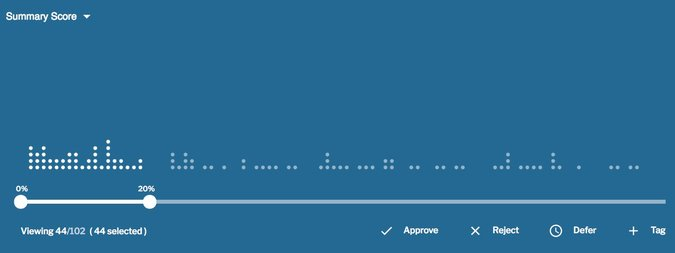Journalism provides accurate and timely information when it matters most, shaping our understanding of important issues and pushing us to learn more in search of the truth. People come to Google looking for high-quality content, and our job is to help them find it. However, sometimes that content is behind a paywall.
While research has shown that people are becoming more accustomed to paying for news, the sometimes painful process of signing up for a subscription can be a turn off. That’s not great for users or for news publishers who see subscriptions as an increasingly important source of revenue.
To address these problems we’ve been talking to news publishers about how to support their subscription businesses with a focus on the following:
- First, Flexible Sampling will replace First Click Free. Publishers are in the best position to determine what level of free sampling works best for them. So as of this week, we are ending the First Click Free policy, which required publishers to provide a minimum of three free articles per day via Google Search and Google News before people were shown a paywall.
- Longer term, we are building a suite of products and services to help news publishers reach new audiences, drive subscriptions and grow revenue.
- We are also looking at how we can simplify the purchase process and make it easy for Google users to get the full value of their subscriptions across Google’s platforms.
Our goal is to make subscriptions work seamlessly everywhere, for everyone.
First Click Free
We will end our First Click Free policy in favor of a Flexible Sampling model where publishers will decide how many, if any, free articles they want to provide to potential subscribers based on their own business strategies. This move is informed by our own research, publisher feedback, and months-long experiments with the New York Times and the Financial Times, both of which operate successful subscription services.
"Google's decision to let publishers determine how much content readers can sample from search is a positive development,” said Kinsey Wilson, an adviser to New York Times CEO Mark Thompson. "We're encouraged as well by Google's willingness to consider other ways of supporting subscription business models and we are looking forward to continuing to work with them to craft smart solutions."
Publishers generally recognize that giving people access to some free content is the way to persuade people to buy their product. The typical approach to sampling is a model called metering, which lets people see a pre-determined number of free stories before a paywall kicks in. We recommend the following approach:
- Monthly, rather than daily, metering allows publishers more flexibility to experiment with the number of free stories to offer people and to target those more likely to subscribe.
- For most publishers, 10 articles per month is a good starting point.
- Please see our Webmaster blog and our guide on Flexible Sampling for more detail on these approaches.
“Try before you buy” underlines what many publishers already know—they need to provide some form of free sampling to be successful on the internet. If it’s too little, then fewer users will click on links to that content or share it, which could have an effect on brand discovery and subsequently may affect traffic over time.
Subscription support
Subscribing to great content should not be as hard as it is today. Registering on a site, creating and remembering multiple passwords, and entering credit card information—these are all hassles we hope to solve.
As a first step we’re taking advantage of our existing identity and payment technologies to help people subscribe on a publication’s website with a single click, and then seamlessly access that content anywhere— whether it’s on that publisher site or mobile app, or on Google Newsstand, Google Search or Google News.
And since news products and subscription models vary widely, we’re collaborating with publishers around the world on how to build a subscription mechanism that can meet the needs of a diverse array of approaches—to the benefit of the news industry and consumers alike.
We’re also exploring how Google’s machine learning capabilities can help publishers recognize potential subscribers and present the right offer to the right audience at the right time.
“It's extremely clear that advertising alone can no longer pay for the production and distribution of high quality journalism—and at the same time the societal need for sustainable independent journalism has never been greater. Reader-based revenue, aka paid-content, or subscription services, are therefore not just a nice-to-have, but an essential component of a publisher's revenue composition,” said Jon Slade, FT Chief Commercial Officer.
“The Financial Times is welcoming of Google's input and actions to help this critical sector of the media industry, and we've worked very closely with Google to aid understanding of the needs that publishers have and how Google can help. That mutual understanding includes the ability to set controls over the amount of free content given to readers, a level playing field for content discovery, optimised promotion and payment processes. It is important that we now build and accelerate on the discussions and actions to date.”
We are just getting started and want to get as much input from publishers—large, small, national, local, international—to make sure we build solutions together that work for everyone.
